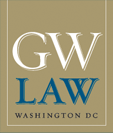Document Type
Article
Publication Date
2014
Status
Accepted
Abstract
The law review literature has long-recognized that effective enforcement is an essential component of effective regulation. Yet much of the literature focuses on one aspect of the enforcement challenge or another. For example, the underlying theory about optimal levels of enforcement has received considerable attention, as have topics such as the relative merits of using deterrence-based versus cooperation-based approaches and the use of citizen suits.
The purpose of this article is to fill a gap in the law review literature by considering agencies’ enforcementand compliance promotion function holistically. In doing so, the article approaches the challenge from an “inside-out” perspective, a perspective that administrative law scholars have found to be lacking in the literature.
The article proposes a three-layered conceptual framework for considering options for structuring the administrative agency enforcement and compliance promotion function. The first layer consists of five components of effective enforcement and compliance: norm clarity, norm achievability, verifiability, an appropriate mix of sanctions and rewards, and indicia of legitimacy. The second involves the inter-related character of these components and highlights the importance of fitting each into a particular enforcementand compliance regime so that agencies may gain synergistic benefits and consider the need to make difficult trade-offs. Third, and finally, our conceptual framework includes four contextual design issues that create additional challenges in determining the appropriate content of each of the five key components of effective enforcement and compliance: the hybrid character of contemporary governance efforts; the importance of “reality-checking” enforcement options through close attention to past performance as well as future challenges and opportunities; the dynamic character of environmental governance challenges; and the salience of possible design changes and the need to prioritize design improvements. The article suggests that it is important to consider all three layers in developing an effective enforcement and compliance promotion regime.
The article tests our conceptual framework by including a case study of an ongoing Environmental Protection Agency (EPA) effort to reinvent its enforcement and compliance promotion program and by applying our framework to EPA’s initiative. This case study illustrates the value of our framework in evaluating regulatory design options for the enforcement and compliance promotion function.
GW Paper Series
GWU Law School Public Law Research Paper No. 2014-5; GWU Legal Studies Research Paper No. 2014-5
SSRN Link
http://ssrn.com/abstract=2404930
Recommended Citation
FSU College of Law, Public Law Research Paper No. 677
